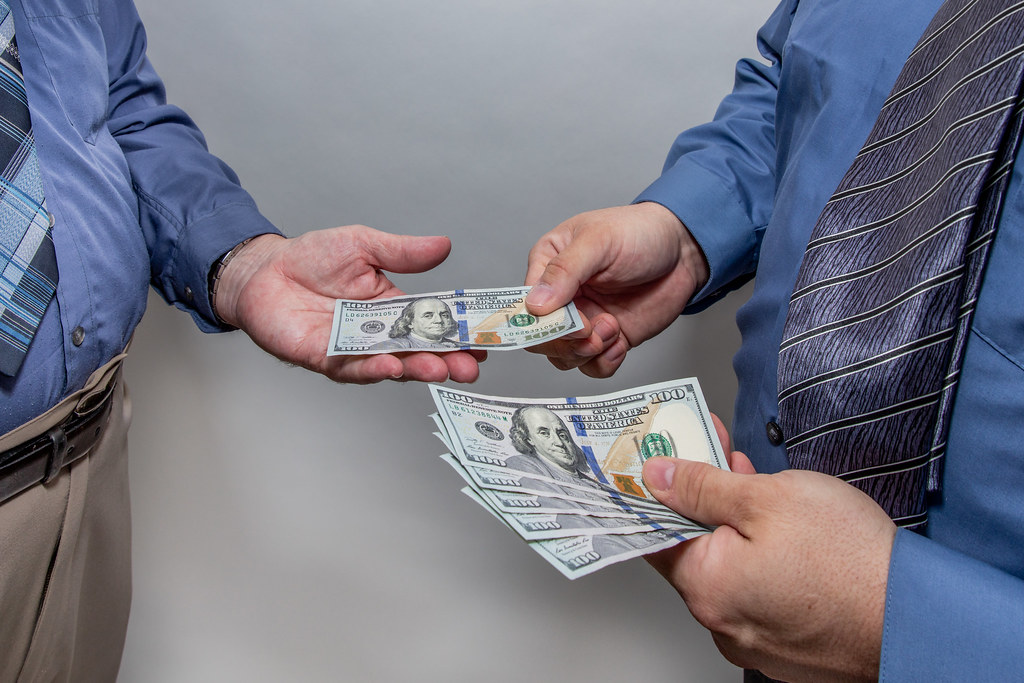
According to USA TODAY, inflation was indeed higher in May, though it showed signs of more stability than initially predicted. The Labor Department’s Consumer Price Index, which is the go-to measure for tracking average changes in goods and services costs, reported a 2.4% increase in consumer prices from 2024. However, looking at the month-over-month picture, costs increased by a smaller margin, just 0.1%, which was actually less than projected.
Despite the nuances in the official data, the impact on consumers feels quite real. Shoppers are expressing frustration, particularly feeling a lack of clear communication from grocers about how things like tariffs might be affecting the prices they pay. A recent survey conducted by research firm The Feedback Group this spring surveyed around 1,000 respondents, and they gave the level of communication on this topic a low average score of just 2.5 on a scale of 1 to 5.
To get a clearer picture of what’s happening on grocery shelves, we took a deep dive into prices right here in Rochester, New York. Visiting four different grocery stores on June 10—Wegmans Food Markets, Tops Friendly Markets, ALDI, and Walmart Supercenter—we comparison shopped for a range of common items. We looked at the full listed prices, the ones you see before any loyalty card discounts, to understand the baseline costs.

Exploring the dairy aisle, we found quite a range for a dozen Grade A large eggs. ALDI and Walmart offered them for $2.96, while Wegmans priced their Grade AA large at $3.19. Tops came in highest for their Grade AA large eggs at $3.99. Milk prices also varied across the stores we checked. A gallon of 2% Friendly Farms milk at ALDI was $2.67. Walmart’s Great Value brand milk, available in all varieties, was $2.72. Wegmans’ own brand, also covering all varieties, was $2.99, and Tops’ brand reached $4.04.
Moving on to pantry staples, a loaf of giant white bread from ALDI’s L’oven Fresh brand and Wegmans’ own brand were both priced at $1.39. Walmart’s Great Value brand was just slightly higher at $1.42, while Tops’ brand was $1.79. Fresh produce also showed price differences. Bananas per pound were cheapest at ALDI at 52 cents, followed closely by Wegmans at 53 cents and Walmart at 54 cents. Tops had the highest price per pound for bananas at 59 cents.
Avocado prices showed the most dramatic variation among the produce we checked. Walmart sold them for 88 cents apiece, ALDI for 89 cents, and Wegmans for 99 cents. Tops priced avocados significantly higher at $2.49 apiece. For a sweet treat, 1.5 quarts of ice cream ranged from $2.95 for ALDI’s Sundae Shoppe to $2.97 for Walmart’s Great Value, $3.99 for Wegmans’ brand, and $4.29 at Tops.
Baking sugar prices varied among retailers, with ALDI’s Baker’s Corner at $3.29, Walmart’s Great Value at $3.46, Wegmans’ brand at $3.59, and Tops’ brand at $3.99; similar fluctuations were noted in protein prices, exemplified by 80% lean ground beef costing $4.69 at ALDI, $5.99 at Wegmans and Tops, and $6.53 at Walmart.

Even a six-pack of beer showed differing costs, although we noted that ALDI doesn’t carry the popular Modelo Especial, substituting it with Holland 1839 at $7.99. Walmart sold Modelo Especial for $10.32, Wegmans for $10.99, and Tops for $11.49. These snapshot prices certainly highlight how much costs can differ just within one metropolitan area.
Beyond the immediate grocery bill, consumers are feeling the pinch in other areas as well, and trade policies, particularly tariffs, are frequently mentioned as a contributing factor. Walmart, one of the nation’s largest retailers, recently made waves by announcing that prices would have to rise, explicitly citing the tariffs being implemented by President Donald Trump. This move by Walmart sets a significant benchmark.
Retail analysts note that Walmart’s public statement about raising prices and attributing it to tariffs provides “air cover” for other retailers. Mark Cohen, a former director of retail studies and current professor at Columbia Business School, explained that Walmart is giving smaller and larger retailers alike space to comfortably adjust their own prices upwards, as they are all grappling with the same issue. While other businesses are likely to follow suit, many might not be as public about blaming tariffs.

Walmart has indicated that price increases will persist through June, with hikes beginning by late May; this trend isn’t isolated to Walmart, as numerous retailers plan to raise prices throughout the year due to tariffs, especially following President Trump’s April 2nd announcement of a 10% baseline tariff on imports from most countries, excluding Canada and Mexico, along with additional ‘reciprocal’ tariffs.
The economic landscape surrounding tariffs is fluid, with notable changes including the tariff on China fluctuating (currently at 30%, down from 145% after a trade deal that did not restore tax exemptions for small shipments), while the auto industry faces a 25% tariff on car imports, despite exemptions for Mexico and Canada; economists argue that the uncertainty surrounding Trump’s trade policies may compel companies to increase prices to offset these costs.
Numerous prominent companies have either warned of or already enacted price increases; for instance, Macy’s Q1 earnings report on May 28th revealed a lowered earnings outlook due to rising tariffs and reduced consumer spending, indicating selective and strategic price hikes on specific items, as noted by CEO Tony Spring who remarked that higher pricing is gradually integrating into the market, while COO/CFO Adrian Mitchell confirmed their approach involves targeted increases rather than sweeping changes.

Retailers Shein and Temu, which significantly benefited from the de minimis trade loophole allowing tax-free imports under $800, released similar notices on April 16th announcing impending price adjustments effective April 25th, attributing these changes to increased operational costs stemming from new tariff regulations, and offering customers a final eight days of lower prices before the adjustments take effect.
The automotive sector is also feeling the heat. Bloomberg reported that Ford planned price increases on new gas and electric cars starting in May unless tariff relief was provided. A memo to dealers indicated the anticipation of “vehicle pricing adjustments.” Volkswagen’s North America chief executive, Kjell Gruner, stated the carmaker would keep prices steady through May, but increases could come in June in response to the 25% car import tariff, noting they would place an import fee on vehicles made outside the US.
Food companies are not exempt. Conagra Brands CEO Sean Connolly told Reuters on April 3rd that the company, which makes products like Hunt’s ketchup and Chef Boyardee, might need to hike prices to offset tariff costs on ingredients such as cocoa, olive oil, palm oil, and the steel used for cans. While uncertain about the exact scale, he stressed during an earnings call that the trade situation remained “volatile” and changed hourly, implying potential price changes were linked to this volatility.
Electronics and home goods retailers are bracing for similar challenges; Best Buy’s CEO Corie Barry acknowledged in March that the global nature of the consumer electronics supply chain means vendors are likely to pass on tariff-related costs, making price increases for American consumers almost certain, while Target’s CEO Brian Cornell highlighted potential price hikes on produce resulting from tariffs on goods from Mexico and Canada, saying these increases could be seen imminently.

Manufacturing companies like Stanley Black & Decker are evaluating their options. CEO Donald Allan said in February that their approach to tariffs would be to offset impacts with “a mix of supply chain and pricing actions,” which might see price increases enter the market, potentially with a delay. Columbia Sportswear CEO Tim Boyle voiced concern about tariff imposition, noting that while adept at managing them, “trade wars are not good and not easy to win,” and the company was “set to raise prices,” finding it “very, very difficult to keep products affordable for Americans.” Auto parts retailer AutoZone, according to CEO Philip Daniele in September, planned to “pass those tariff costs back to the consumer,” generally raising prices ahead of time.
Consumer goods giant Procter & Gamble (P&G), behind brands like Tide and Charmin, is also considering price hikes. CEO Jon Moeller called price hikes “likely,” and CFO Andre Schulten stated they would “pull every lever we have in our arsenal to mitigate the impact of tariffs,” evaluating pricing plans “by brand, by market.” Even luxury items are seeing increases. Ferrari, the Italian luxury carmaker, announced in March a potential price hike of up to 10% on certain models imported to the US starting April 2nd, directly linking it to information about new import tariffs. Hermès, known for its luxury goods, hadn’t felt the tariff impact yet in April, but executive Eric du Halgouët stated they would raise prices in the US in May specifically to offset the tariff increase, noting it would only apply to the American market.
Even our hobbies could become pricier, as Nintendo reassured fans that their upcoming Switch 2 console would not face a tariff-related price increase, yet pointed out that accessories would undergo price adjustments due to market conditions, with other potential product price changes on the horizon; additionally, camera manufacturers like Nikon, Canon, and Leica are also increasing prices, with Nikon announcing a necessary price adjustment effective June 23rd due to tariffs, and Canon and Leica both confirming their plans to raise prices while still assessing the specifics.

As we navigate this shifting economic environment, it is evident that rising prices represent more than just abstract figures; they have a direct impact on household budgets nationwide, affecting everything from your breakfast cereal to your car’s tires; the complex interplay of inflation, trade policies, corporate strategies, and consumer spending power presents a challenging puzzle, with many feeling the pressure of increasing costs and tighter financial constraints; as retailers make adjustments and consumers learn to adapt, the future of pricing remains a crucial consideration for families closely monitoring their expenses; will these price hikes be temporary, or are we entering a new era of elevated costs? Time and evolving policies will reveal the answer, but for now, careful budgeting and awareness of spending are more essential than ever.
Related posts:
Are grocery prices feeling the inflation burn? See our price check
Trump voters get smacked by inflation in shopping aisles — and some blame tariffs
After Walmart Raises Prices Due To Trump Tariffs, Other Retailers Follow Suit, Raising Inflation Fears



:max_bytes(150000):strip_icc()/WalmartCheckOutLanesjpg-185b345695ce428284b7c66b5313b2d1.jpg)
